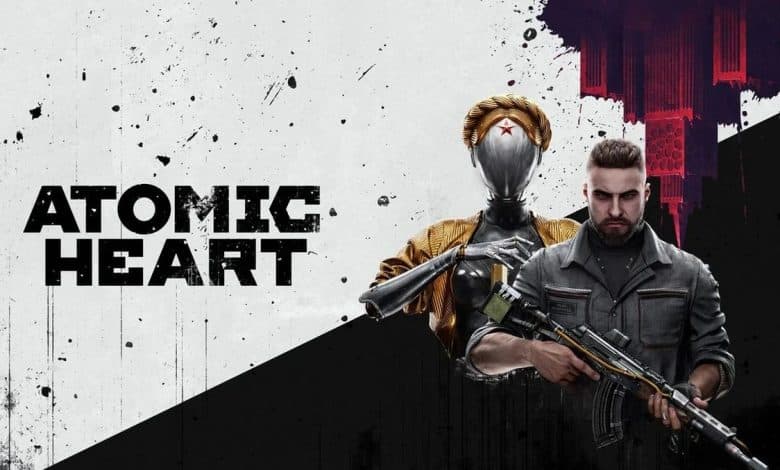
Atomic Heart by Russian Mundfish (now based in Cyprus, for obvious reasons) was one of the most anticipated games of the year. Ever since it was first unveiled, some four or five years ago, it had made an impression with its artistic approach, very reminiscent of our beloved Bioshock, and it also showed off the power of RTX technology, which was just starting to make a tentative appearance.
Since then, many things changed: Mundfish, from a team of a few people, turned into a large development studio, with Focus Home Interactive supporting it as publisher, until we reached 2023 and the completion of Atomic Heart as an AAA title. Admittedly, the game seemed to have all the makings of being the "next big thing" in the FPS genre, but the fact that it was the first full-fledged attempt by that studio made us have some reservations about the final outcome. Were they well-founded after all? You'll find out right away.
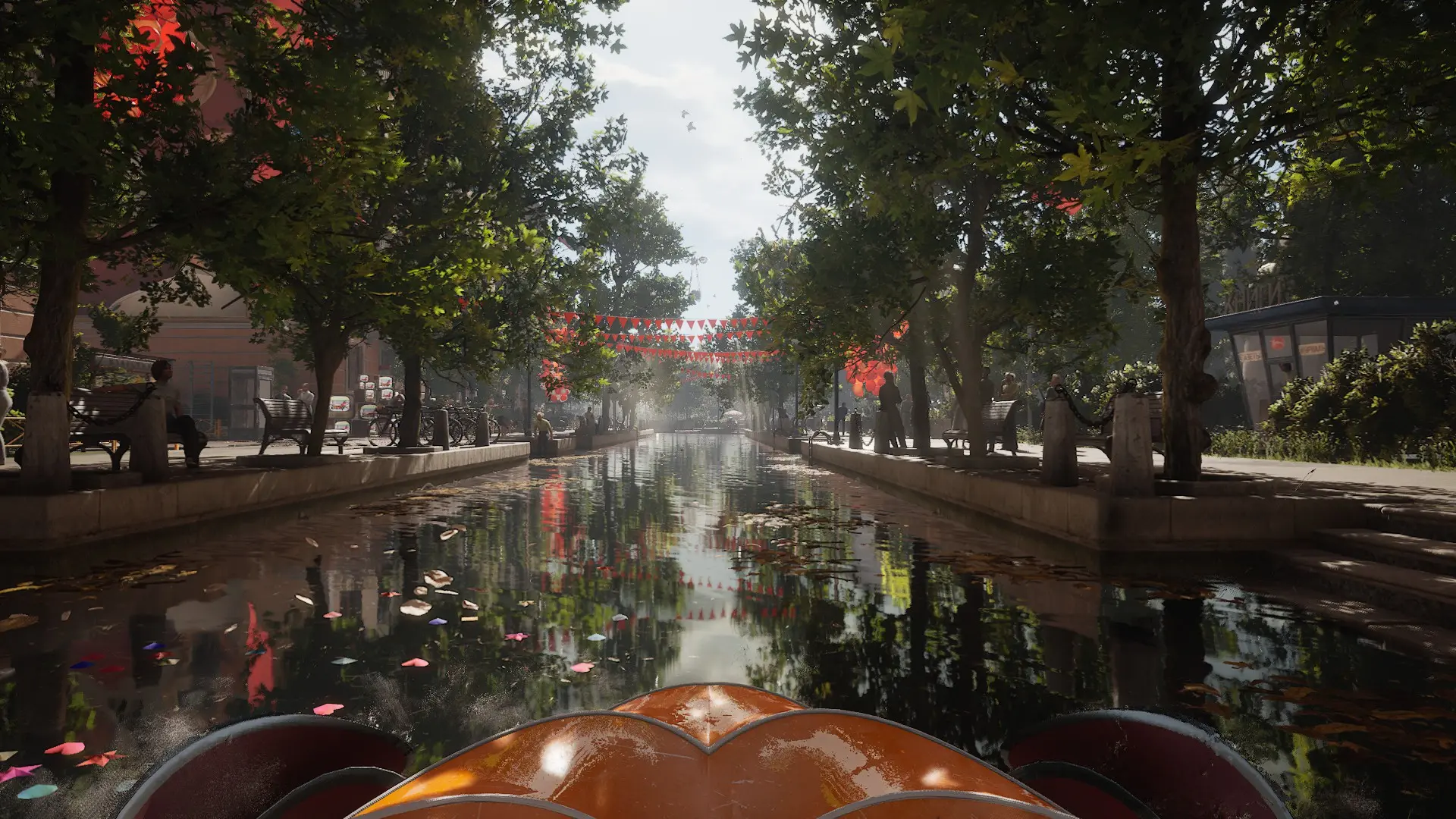
The Atomic Heart case is quite interesting. It is set in an alternate 1950s, a few years after the end of World War II. History remains as it was, with the Allies victorious against the Axis powers, except that the USSR has managed to grow into a massive superpower, the likes of which existed in no other part of the world. The reason is that the Soviet Union's scientists discovered a mysterious substance, Polymer, which is a source of almost unlimited energy, while having unnatural effects on any living being subjected to its influence. Of course, such a 'treasure' could not be left untapped, with scientists developing a super-sophisticated AI, code-named Kollektiv, to combine with the energy 'gifts' of Polymer and set up an ideal and just society.
Indeed, for a few years, the coexistence of Kollektiv and Polymer seemed to be every citizen's dream. The robots that have taken over all the key positions in society work flawlessly and tirelessly under the infallible instructions of the Kollektiv, while the reassurance created by Polymer's inexhaustible reserves inevitably lead the Soviets to more grandiose projects than dealing with mundane, "earthly" issues, such as what the Americans and their capitalism are doing. But that was all until recently, when suddenly all the motorized constructs that served, with painted smiles and trimmed moustaches, humanity, turned against it, spreading chaos and leading to horrible deaths, thousands of innocent inhabitants.
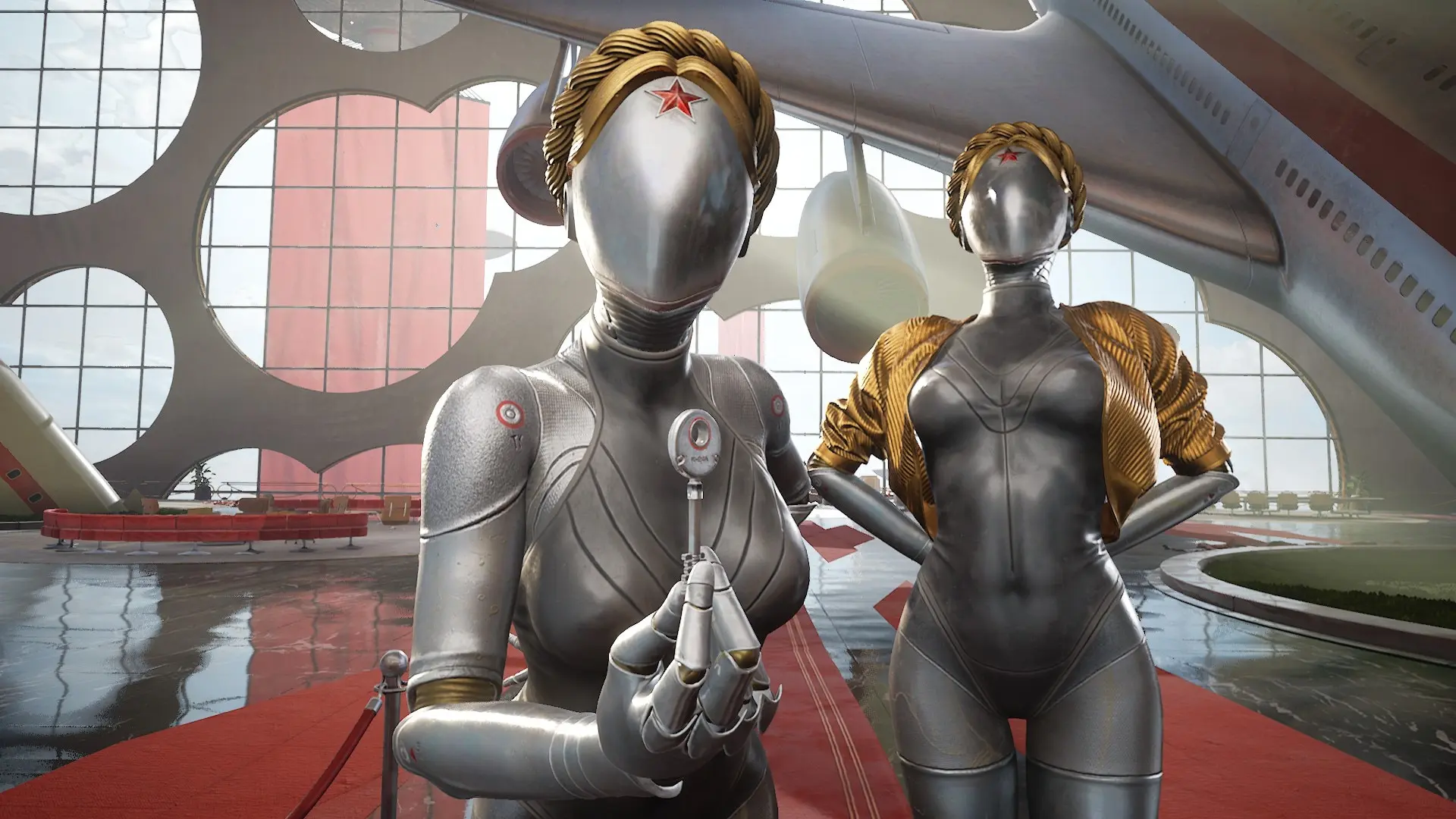
We take the role of the tough Sergey Nechayev, who bears the code Major P-3 and is the right-hand man of Dr. Sechenov, one of the perpetrators of the creation of the former "ideal" society. In the midst of the unspeakable disaster that plays out, P-3 is tasked with discovering what happened and the machines turned against their creators, and in order to help him in his task, Sechenov gives him a talking... glove, the CHAR-les. Said glove, apart from talking incessantly, offers P-3 some very useful features, such as using Polymer to his advantage, scanning the environment as a portable sonar, placing waypoints, etc. So together, they have to investigate the causes of the sudden change, with the truth turning out to be much worse than they imagined.
In general, the plot of Atomic Heart is on a satisfactory level, it escalates remarkably, while it also has the corresponding twists that, in the end, are not as distinct as it initially predisposes us. However, several flaws are found in terms of the story's delivery to the player, as the writing is not the best possible. There are moments when the game mocks the events more than it should, occasionally giving the impression of parody, while the duo of P-3 and CHAR-les can occasionally have fun with their feuding, but somewhere along the way they go too far with their profanity and unabashed censure of their actions. P-3 in particular isn't the most sympathetic protagonist we've ever seen, as the way he thinks and expresses himself is more reminiscent of... Duke Nukem than a former Soviet Army officer who served in the War, which seems out of place with the whole concept of the game.
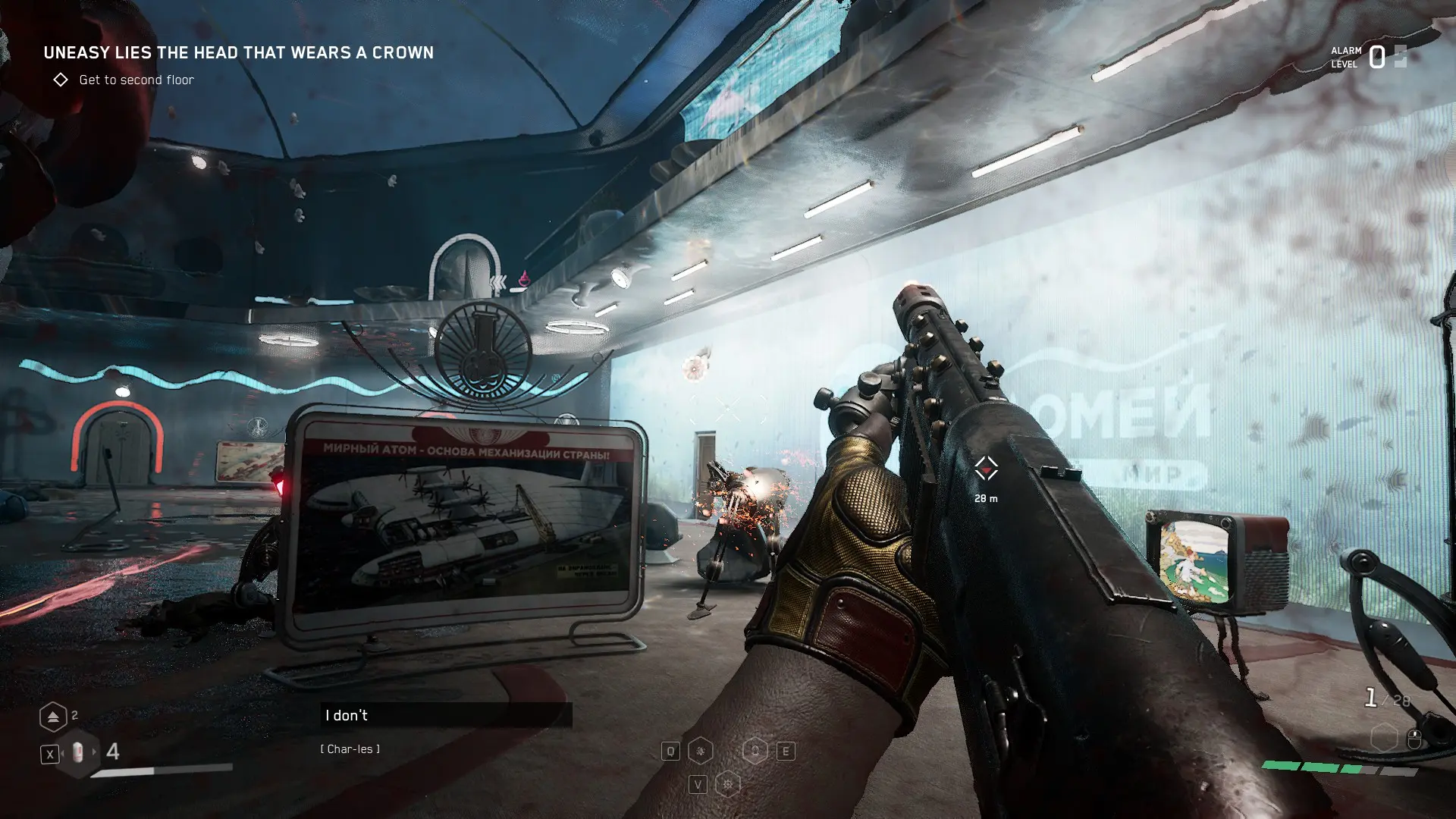
An impressive concept, however, in terms of the performance of an alternative type of Soviet Union. The combination of 50s aesthetics and sci-fi is amazing, as at the same time as the huge imposing statues and futuristic, almost alien, buildings, we can spot typical devices of that era, such as radios, televisions, telephone sets and even the popular red Lada! Especially, the first hours of the game, before the destruction begins that is, leave you with your mouth agape at how flawlessly the Mundfish people have managed to render the (temporary, as it turns out) greatness of the country.
On the plus side, Atomic Heart never ceases to amaze with its graphics, even when we focus our attention on the main part of the game, the gameplay. Needless to say that the game is a pure FPS, however, to our surprise, it also features several puzzle elements. Either in the form of regular mini-puzzles (mainly for unlocking locks) or in the form of platforming challenges. However, solving them is never particularly troublesome, as the action element is what clearly prevails.
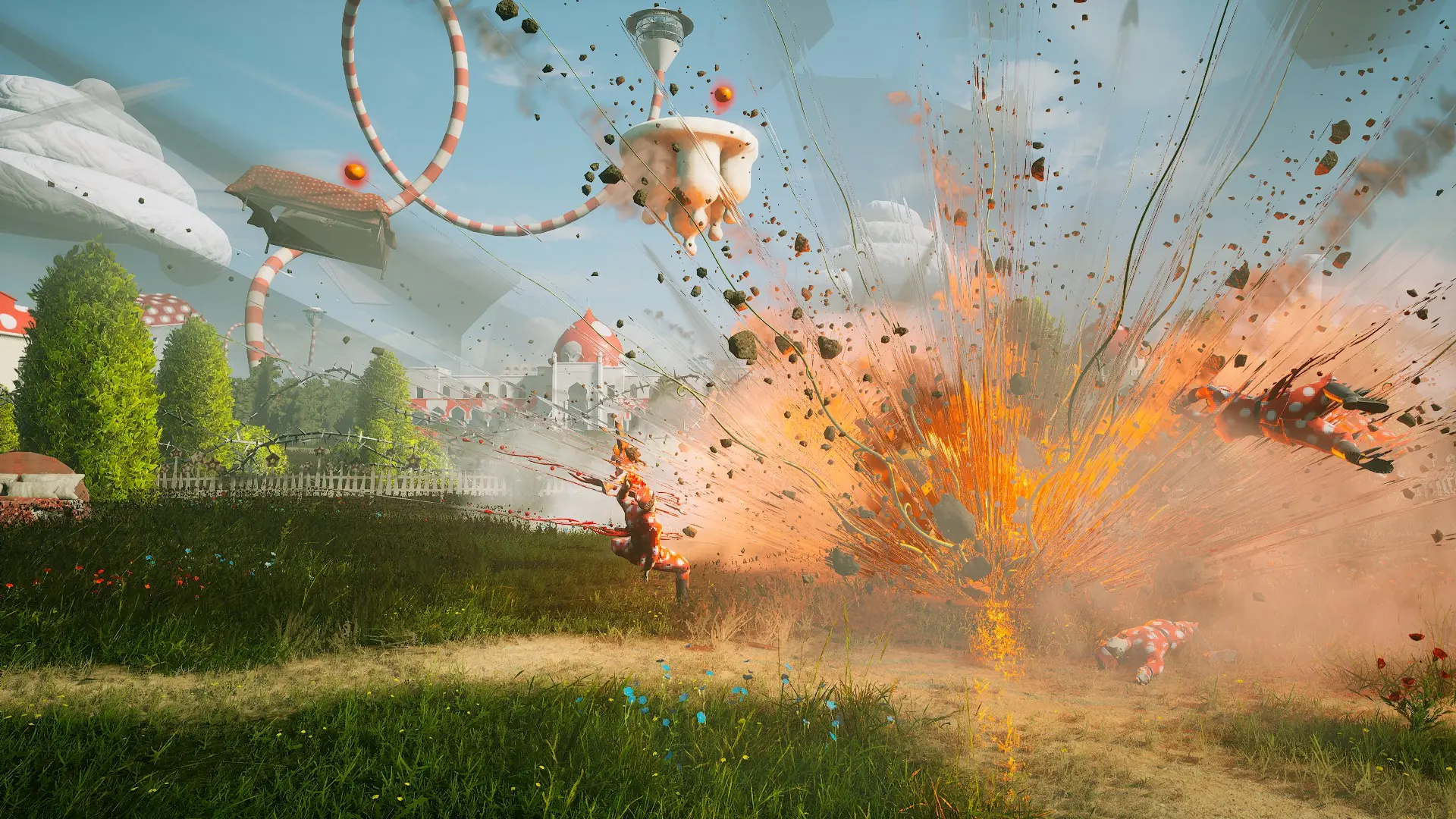
Thus, the P-3 has access to conventional weapons such as axes, revolvers, shotguns and Kalashnikovs, but also to energy weapons such as the Dominator and the Railgun, based on the available Polymer provided by CHAR-les, which is replenished over time (or with the relevant pick-up). As such, CHAR-les contributes to the battlefield with additional skills (active and passive), such as firing electrical discharges, creating a shield of protection, temporarily freezing enemies, etc. For each of the skills, there is the associated skill tree, in which we can improve their performance, keeping in mind that it is possible to have only two active ones at a time.
The basic requirement for accessing the P-3 and CHAR-les skill tree is to be near a vending machine. The vending machines also have a common sense, because of the Kollektiv of course, they beg to have...unbridled sex with the protagonist (I don't want to know how) and because of their love, they allow him to experiment with skills as much as he wants. This means that any skill we acquire is not final, as we can take back the materials we spent on one, at no cost, and put them somewhere else. This can be very useful in some cases where we have to adapt to future difficult circumstances, with the active skills we had defined up to that point not working.
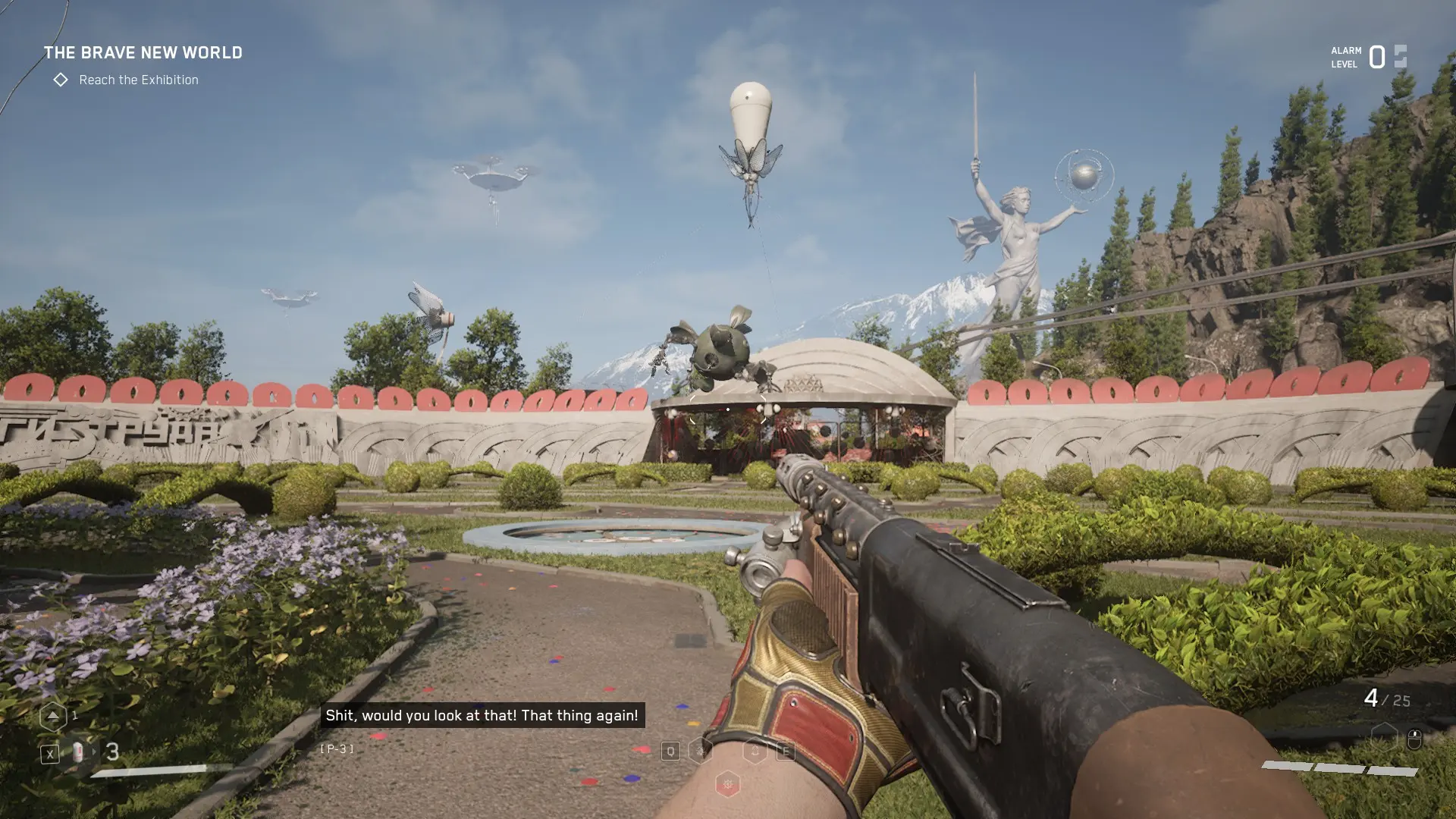
However, the erotic vending machines do not only provide skills, but also the possibility of crafting. Crafting is another great chapter of Atomic Heart, as it is the only way to obtain new weapons. As we progress through the adventure and snoop around the environment, it is possible to find some blueprints, which are either new weapons or ammunition (even enhanced, such as with fire, electricity or ice) and items for instant health replenishment or polymer, etc. So having collected the relevant materials, mostly from the corpses of defeated robots, and having the blueprint in our possession, we can craft them or even improve them. There is no exact limitation on how many weapons we can carry at once, but the P-3 has a limited inventory (which of course increases with the corresponding passive skill). Therefore, if we load it up with weapons, we will automatically have less space for ammo and medi-packs, so it's better to focus on only the weapons we are interested in, rather than carrying all of them unnecessarily.
It's worth noting that some blueprints appear randomly, so it's quite possible that we won't find a weapon during our playthrough. As an example, I discovered the very useful Kalashnikov shortly before I completed the game, whereas up until then I was baffled by the melee weapon blueprints. I imagine one of the reasons for this is to enhance the open-world element of the game, as not a few blueprints are hidden in the various Testing Grounds on the map, which are activated after the first part of the game, which lasts around 3-4 hours.
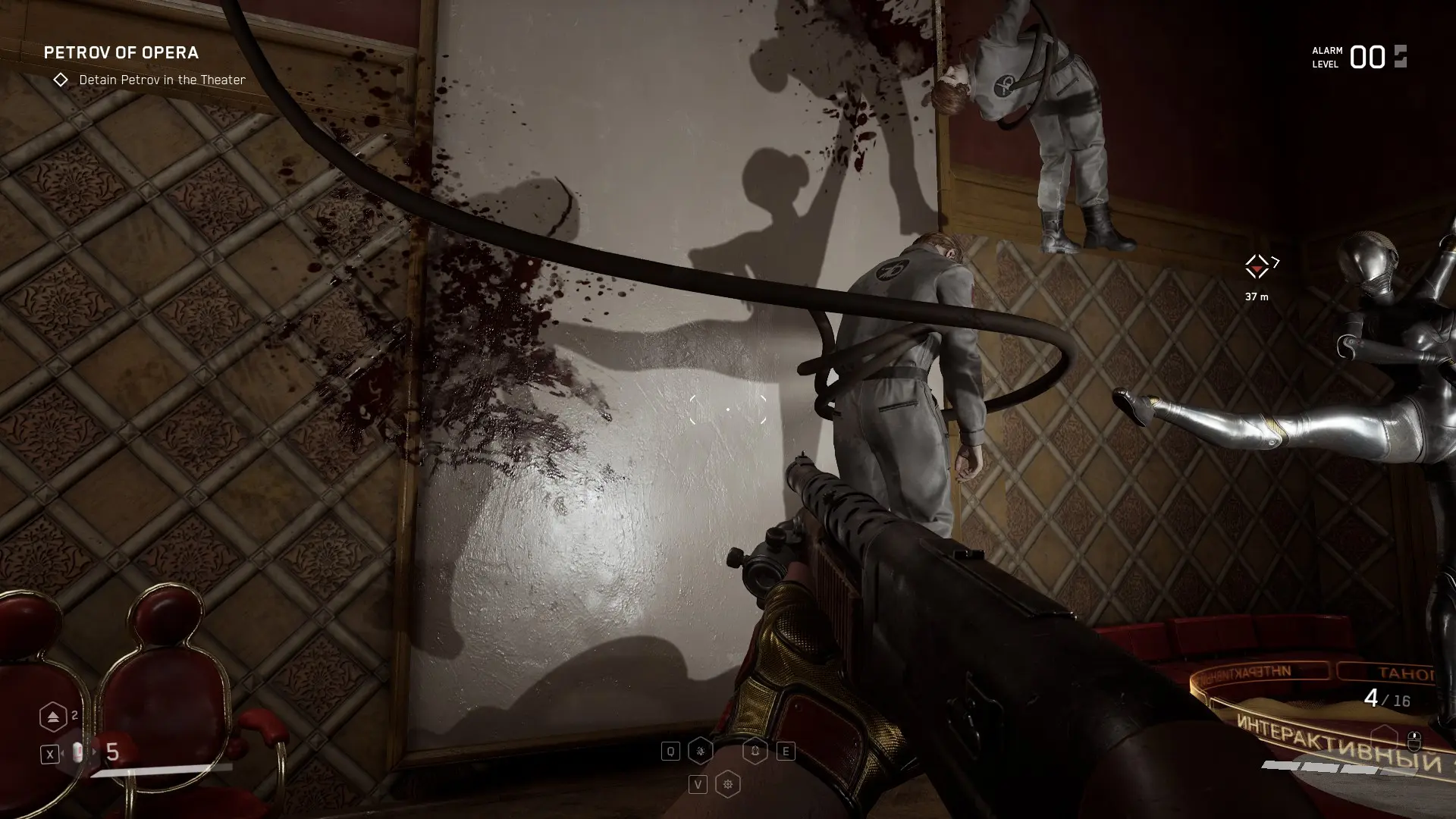
You didn't read it wrong. Atomic Heart, after its perfectly linear first few hours, opens up its map and allows us to explore it to collect more blueprints and crafting materials. However, we found that element rather disappointing. Beyond the materials, there's almost no reason to bother with the secrets of the map, and the implementation is poor and, in places, frustrating. In each area, there are dozens of enemies, making any attempt to approach them difficult without wasting a significant amount of ammo, and the Alarm system, which increases every time the numerous cameras detect us destroying robots, once it reaches level 2, is reason to ragequit.
On the plus side, we can easily avoid enemies by simply walking straightly (no run button, only dodge) to the next waypoint or driving a car, but the reason for the open world is automatically nullified. I get the impression that the open world was an afterthought of their creators, there is no other explanation for the drop from the exciting pace of the first three hours to the slower and more methodical pace of the rest of the game.
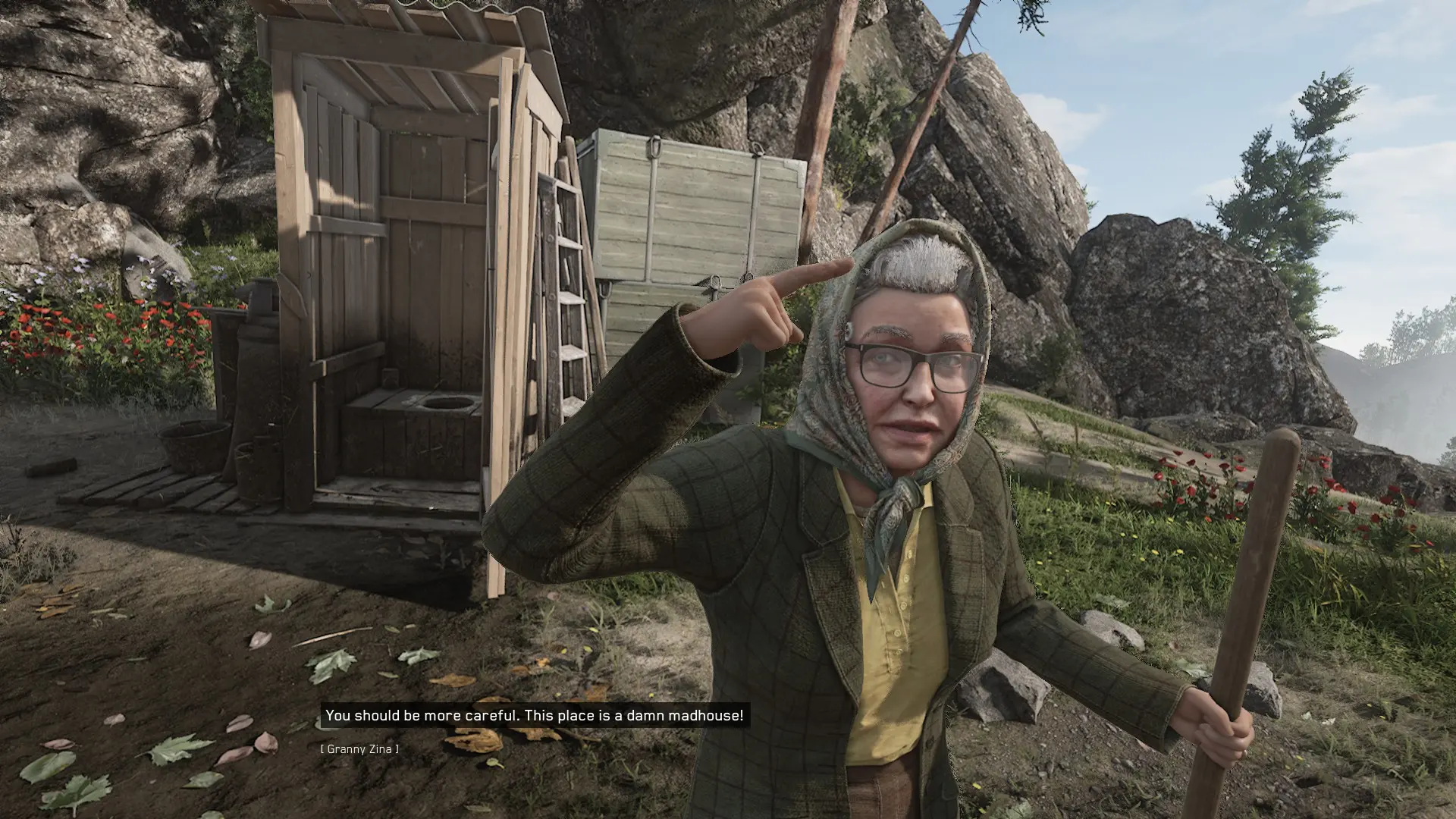
The same could be said for some other elements, such as stealth, which is practically useless, as robots can detect us very quickly and from meters away, and its emphasis on melee, as from a certain point onwards, the number of enemies is so big that we should avoid any "heroic" attempts. Enemies that unfortunately don't have a wide variety of species, but often prove to be very tough nuts to crack, both with their resilience and their unpredictable kinematics, especially if we don't know what their weak point is (CHAR-les' scanner can help us with this). However, the bosses are quite remarkable and fighting them raises the adrenaline level considerably, however, with the exception of the amazing first boss and the last one, the rest of them don't have much imagination.
At this point I should mention that Atomic Heart is surprisingly difficult, even on the middle level (Local Malfunction), while any reduction to the easier level makes the game a real walk in the park. A more balanced implementation would be welcome, and certainly a more thoughtful save system, as there are times when checkpoints are spaced quite sparsely apart or unnecessarily too close together.
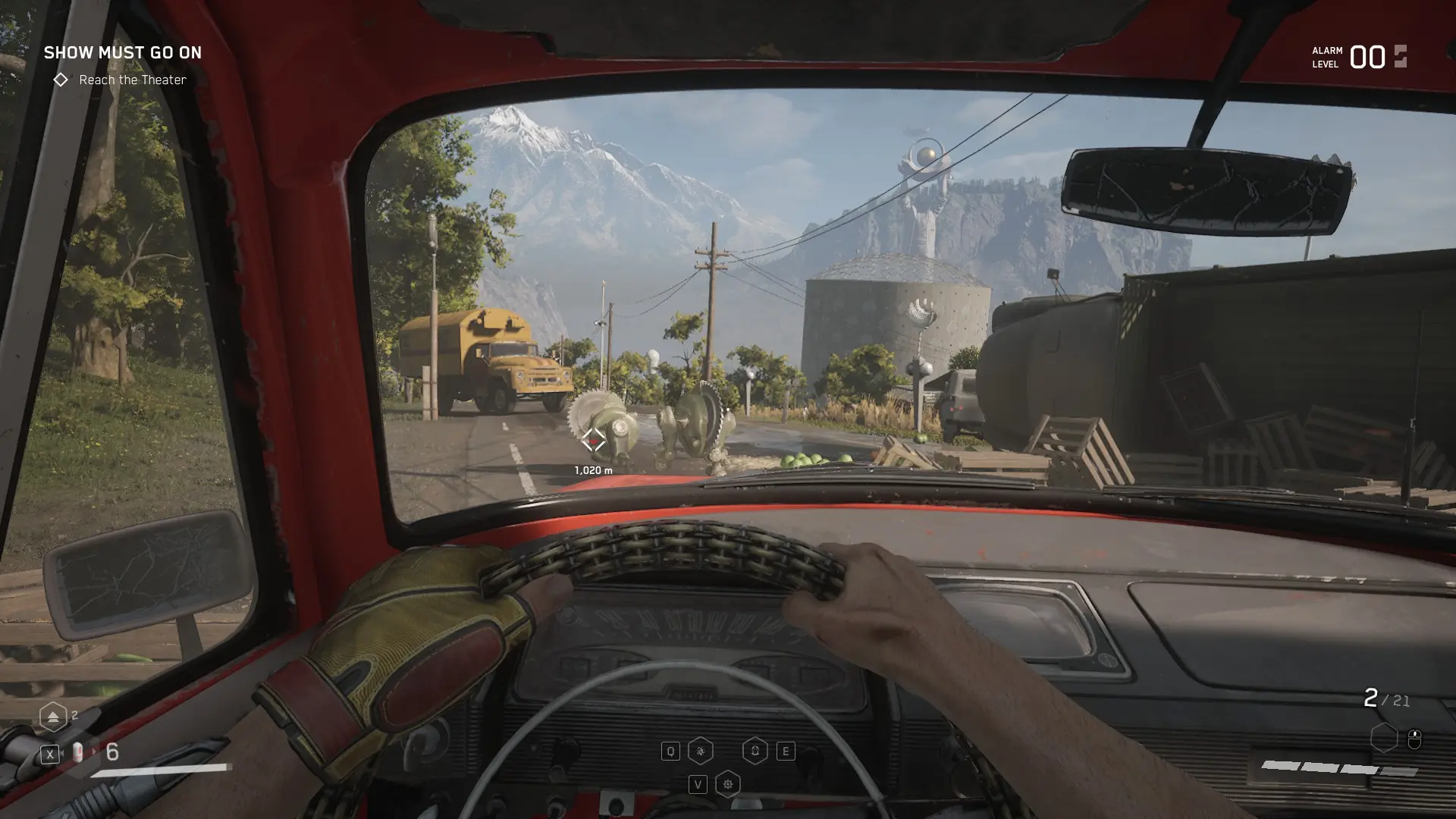
In essence though, Atomic Heart is undoubtedly a fun FPS. The main mechanics that make a quality FPS work seamlessly, with the battles being exciting, thanks to the combination of conventional weapons and Polymer, which creates some memorable moments that have respectively only been experienced in top games in the category. However, the truth is that we would have preferred the game to remain purely linear, because that's where it seemed to do better. Mundfish, in its attempt to fit as many things into its product as it could (open world, stealth, crafting), lost its focus and Atomic Heart didn't take advantage of them. Not to mention that the team "forgot" to incorporate RTX elements, the ones that were advertised as a key feature of the game from the moment it was announced! Sure, they'll be there in a future patch, although, between us, the game is already pretty impressive as it is, so we can't say we missed them that much.
In conclusion, we have to praise Mick Gordon's amazing soundtrack, which really steals the show with its variety (opera, metal, pop, you name it and it's there) and the inspiration it possesses. Overall, Atomic Heart is a game that is by no means the masterpiece we probably hoped for, but it's a worthwhile title that will provide guaranteed entertainment for the 16-17 hours or so it lasts, and leaves a serious legacy for an even higher quality sequel.
We would like to thank AVE Group for providing the review code.
RATING - 78%
78%
Crispy Critters
Fun and with several clever FPS ideas, but it bends under the weight of its ambition.








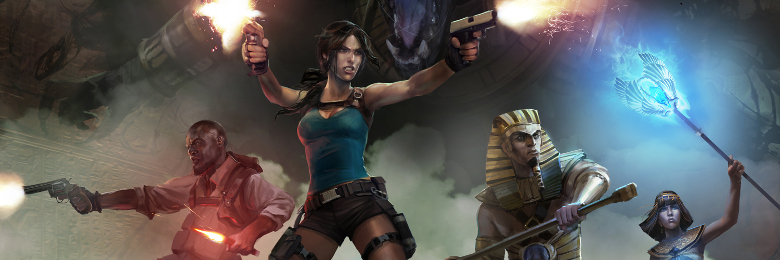
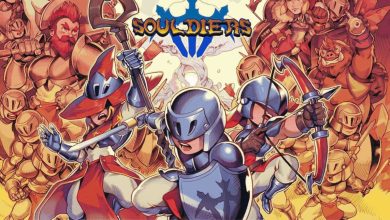
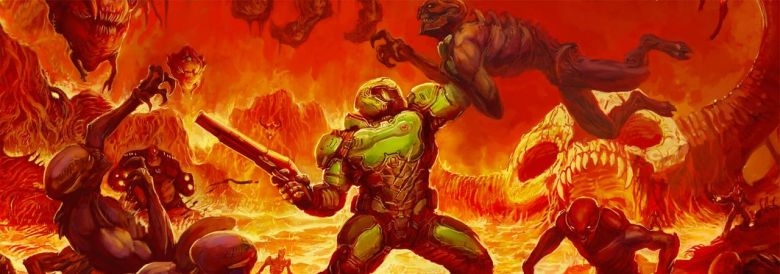


data-trpgettextoriginal=7 comments